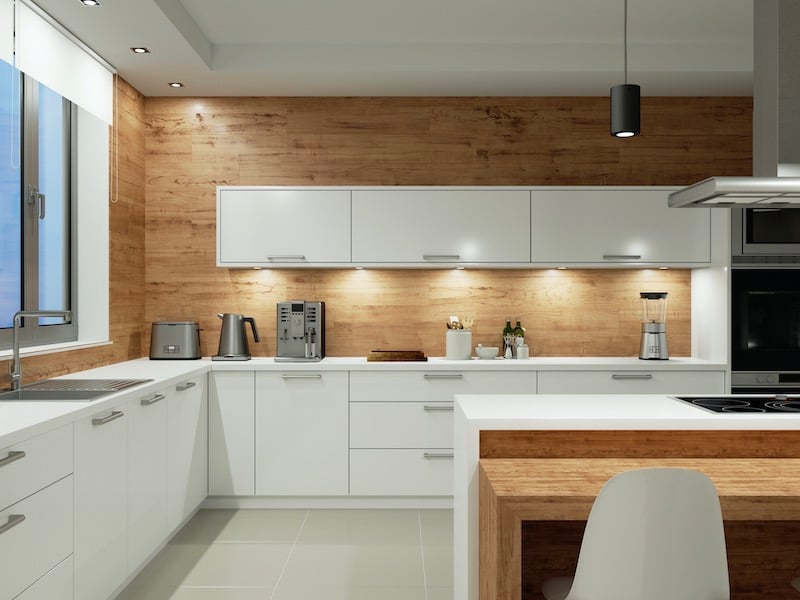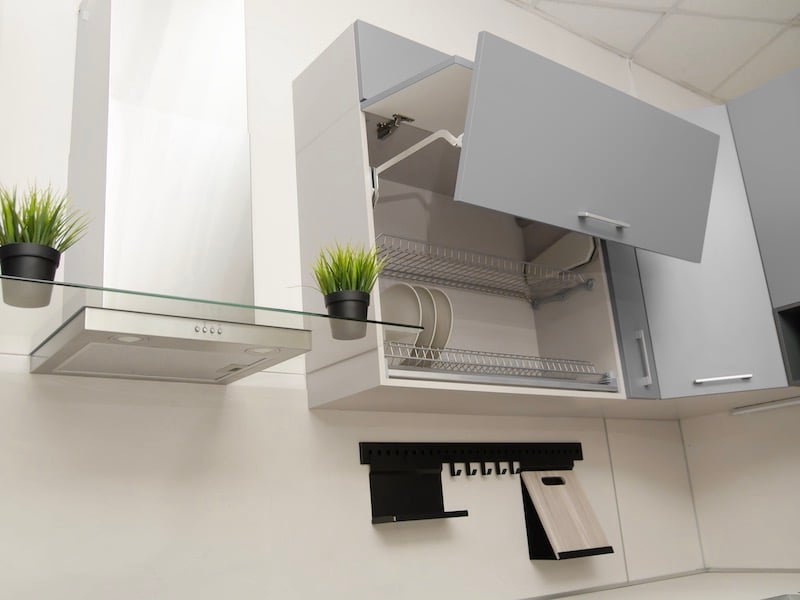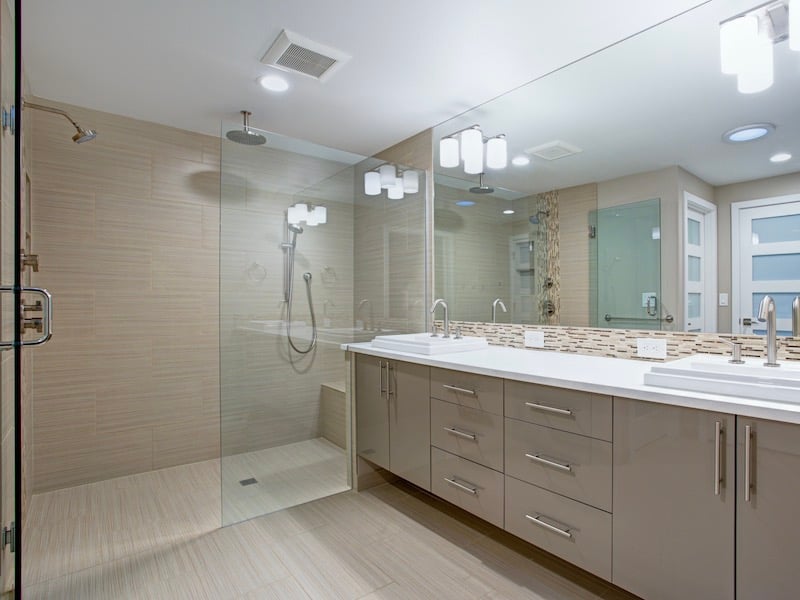How To Modify Your Home To Make It Safe And Comfortable As Your Needs Evolve
The US Centers for Disease Control and Prevention (CDC) defines aging in place as "the ability to live in one's home and community safely, independently, and comfortably regardless of age, income, or ability level."
Most adults would prefer to age in place for the feeling of greater independence and comfort that remaining in their homes can provide. Planning ahead to ensure that your home will accommodate your evolving needs is essential since it may be necessary to build an addition or remodel certain areas of your home to make them more accessible.
Universal Design concepts that make a home safer for everyone regardless of age, physical ability, or stature should be applied to your remodeling plans when your wish is to remain in your home as long as possible. And remember, designing for safety and function does not mean you have to sacrifice beauty. To make the design and remodeling process easier, we've compiled a list of modifications that can make your home more user-friendly when aging in place.
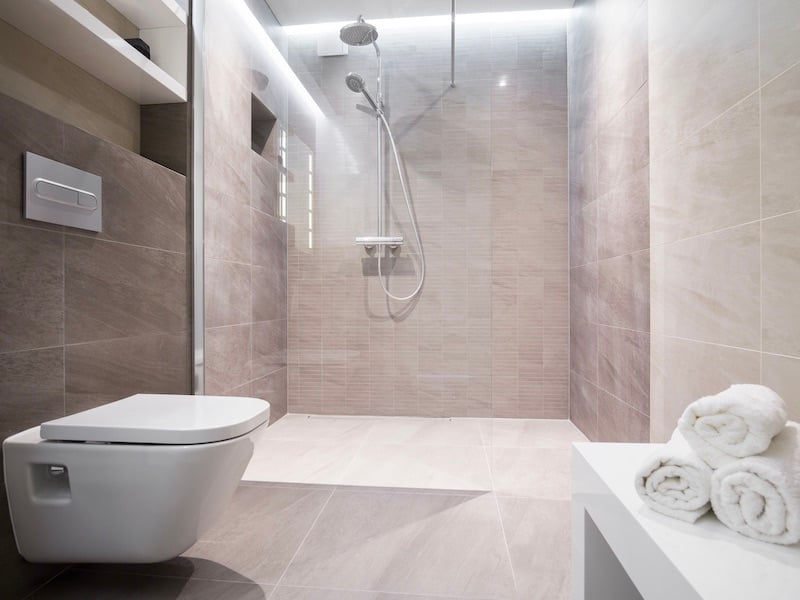 Kitchen
Kitchen
Will your kitchen suit your needs as you age in place? Evaluate the functionality and aesthetics of your kitchen in its current condition and consider the following recommendations.
1. Kitchen Layout
Design your kitchen so that there is plenty of space to maneuver around comfortably on your own, with a walking aid, or in a wheelchair. Make sure that your appliances and sink are placed strategically in a work triangle so that everything can easily be accessed for meal prep and cooking.
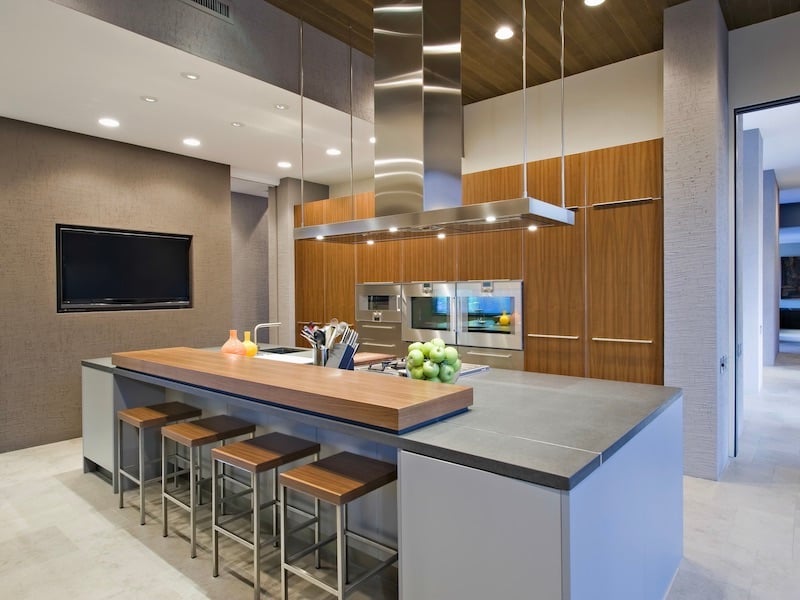
2. Kitchen Countertops
Varied-height countertops will allow you to work from a seated position or from a standing position. Rounding the edges and corners on your countertops may reduce the chance of injury. And, choose a countertop material that is low maintenance and easy to clean.
3. Kitchen Cabinets
Base cabinets should have pull-out drawers instead of doors to make it easy to see inside and retrieve items. Upper, wall-hung cabinets should be simple to open with adjustable height or pull-down shelves inside. Mount the upper cabinets about 3 inches lower than conventional height to make items more accessible. Adding glass doors to the upper cabinets will allow you to see what is inside without having to open the doors. Select oversized handles that are easy to grab or magnetic touch-and-release hardware for your kitchen cabinets.
4. Dishwasher
Installing your dishwasher on a platform will raise it up slightly so you don't have to bend over so far to load or unload the dishes. Or, consider drawer-style dishwashers instead of a traditional model. They are easy to access and will allow you to run each one independently when you only have a few items to clean.
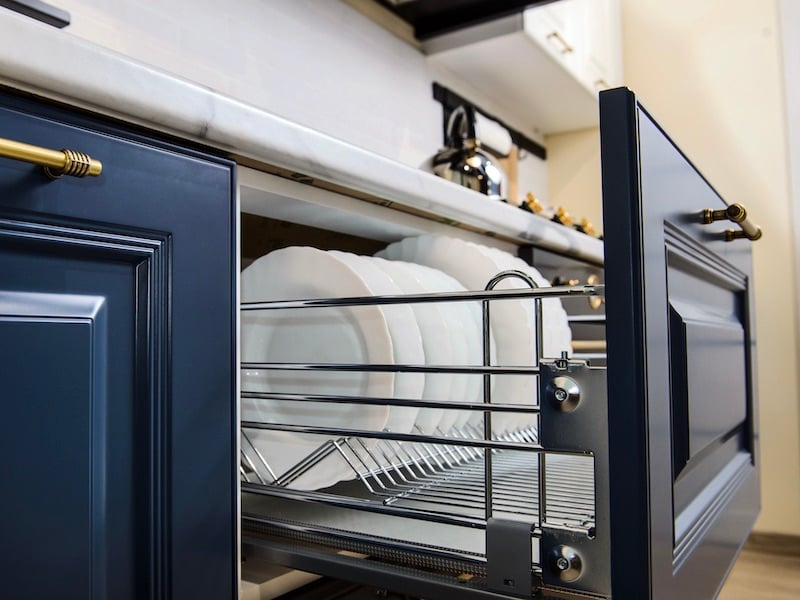
5. Oven, Microwave, Warming Drawer, and Cooktop
Place your wall oven at a height where it is accessible and convenient when the door is lowered. Add a pull-out counter directly beside your oven where you can set hot dishes down.
Install your microwave into a base cabinet so you don't have to reach up to remove hot food. A sliding drawer-style microwave is a good option, too.
A warming drawer is a household appliance that is designed to maintain a steady temperature without overcooking or drying out the food you place inside. You can prepare an entire meal in advance and keep it warm when dinnertime is still an hour away. A warming drawer could be installed in a base cabinet, in an island, or under a cooktop. When deciding where to put your warming drawer, keep in mind that they are electric and do not need special venting, but they will require adequate electrical service.
Opt for an accessible cooktop with front mounted controls and cabinet doors underneath that can be opened to accommodate a wheelchair. The flame on a natural gas cooktop or range can pose a safety hazard, so going with an electric model may be a better choice. Consider adding a pot filler faucet next to your cooktop or range to avoid having to carry heavy cookware filled with water from the sink.
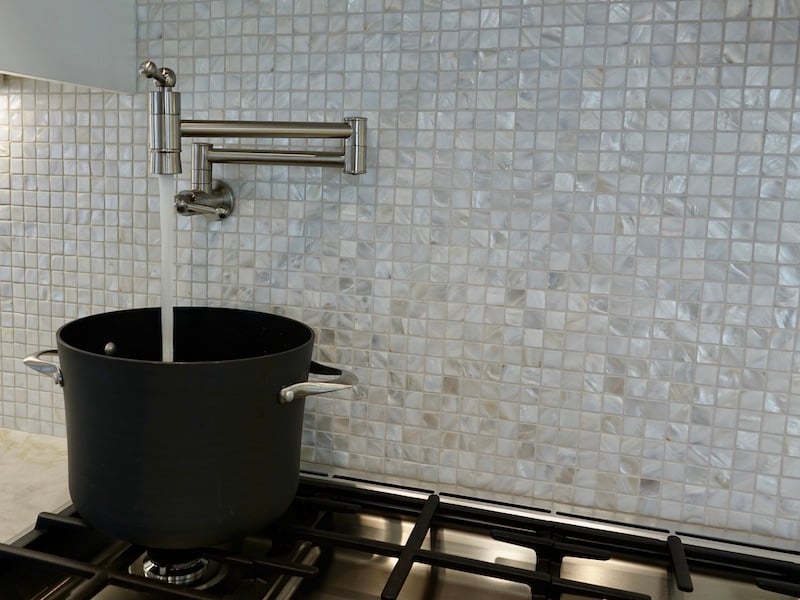
6. Refrigerator
Side-by-side refrigerator/freezer models can provide easy access to the contents inside from a seated or standing position. The doors are narrower and lighter weight than other types of refrigerators, too. Having a water/ice dispenser on the outside of the doors adds convenience. Choose long, continuous handles that allow for improved grip from any height. Or forgo the large side-by-side and go with smaller, under-counter ADA compliant refrigerator and freezer units.
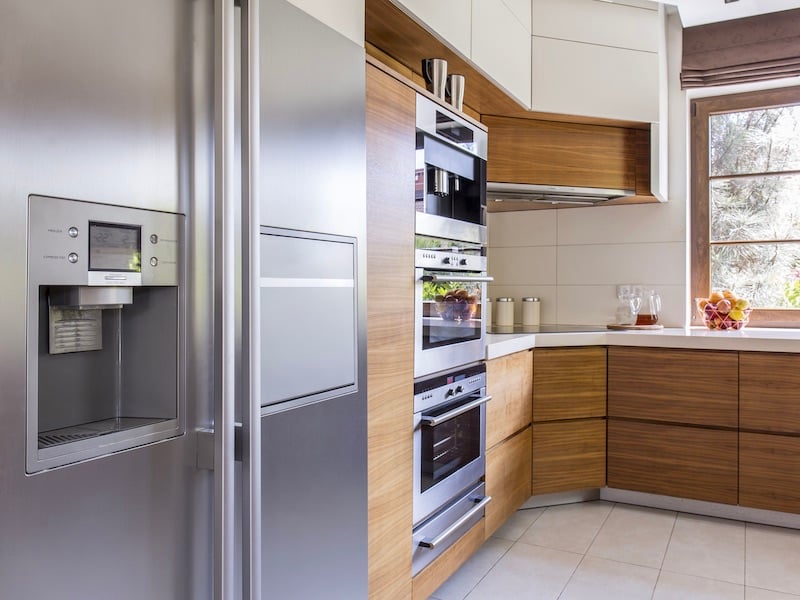
7. Kitchen Sink
Consider leaving an open space underneath your sink or purchasing a motorized sink that can adjust from standard height to a level that is accessible to someone in a wheelchair. A shallow sink with a pull-out sprayer faucet can make it easier to reach items for washing so you don't have to bend over. A hands-free soap dispenser is more hygenic and simpler to use than one with a pump. Install a touchless faucet that turns on and off and adjusts the temperature with the wave of a hand. Add an anti-scald device to avoid burns, too.
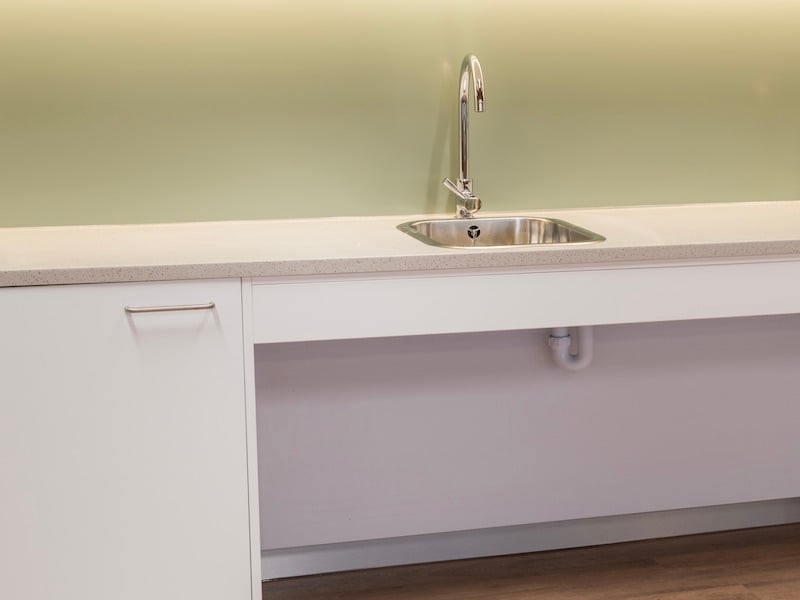
8. Kitchen Flooring
Many falls occur in the kitchen, so textured flooring with a non-slip coating can provide the extra traction you may need. Select a durable flooring material that is easy to maintain and keep clean. Use the same material throughout your entire kitchen area and install flush thresholds to help eliminate tripping hazards.
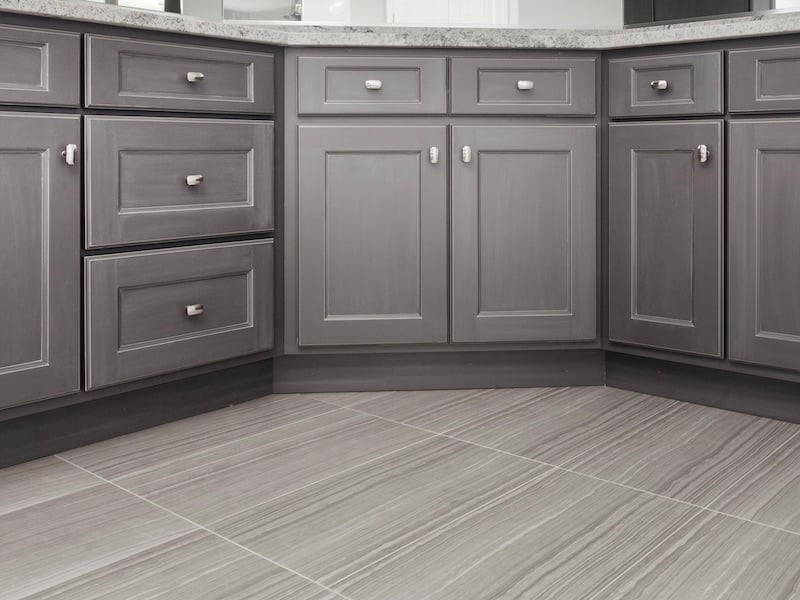
9. Kitchen Lighting
Create a mix of ambient, task, and accent lighting in your kitchen. If possible, incorporate a window into your kitchen design for natural light. Add task lighting over areas where you will prepare meals, wash dishes, or cook. Accent fixtures, such as under-cabinet or toe-kick lighting will illuminate dark areas on the countertops or floors. Install rocker-type light switches in accessible places and consider automatic or sensor switches that turn on the lights when someone enters or leaves the kitchen.
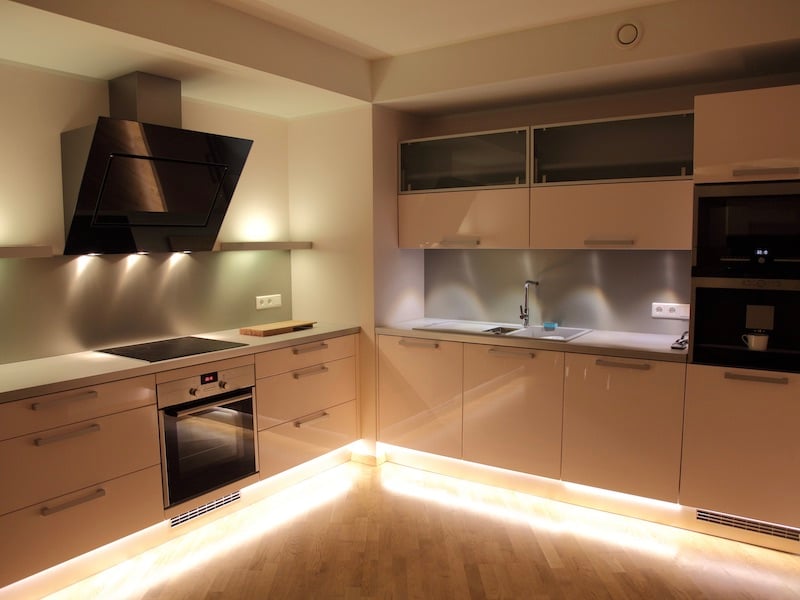
Bathroom
Safety and convenience are top priorities when remodeling your bathroom to age in place. Use these tips as a checklist to make sure your bathroom will fit your needs as they change over time.
1. Shower
Incorporate a stand-alone shower with a curbless edge into your layout. This type of shower will allow you to walk or roll in easily. Add a bench and grab bars for safety.
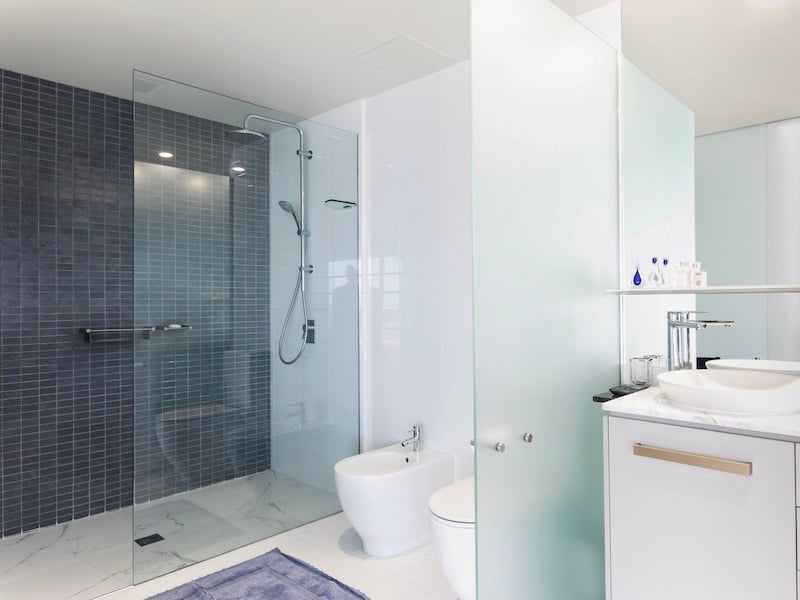
2. Bathtub
If you want to have a bathtub, choose a free-standing one with a step-through door that has a watertight seal. There are models with jets and built-in seats for comfort and convenience. If limited space will only allow for a shower-and-bathtub combination, install glass doors because they are safer than having a shower curtain, and don’t forget to install grab bars.
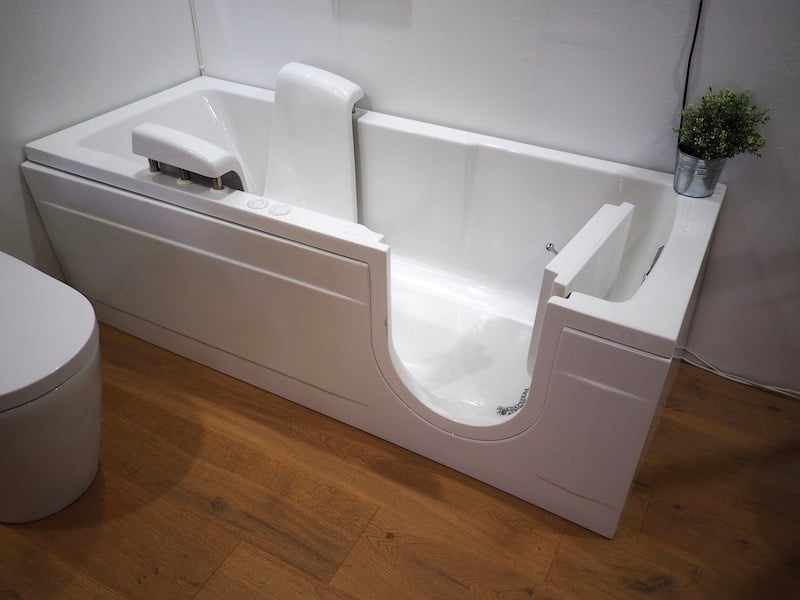
3. Showerheads and Faucets
Install removable and extendable shower heads so that you can wash yourself easily and rinse the shower or tub when you’re cleaning. Select levers instead of knobs for the sink, shower, and tub. Alternatively, you can choose a touchless faucet for your sink.
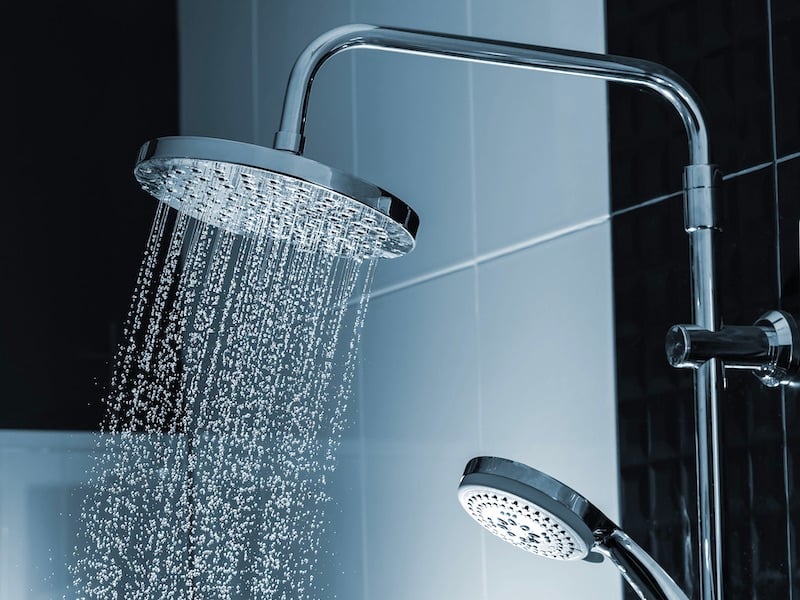
4. Anti-Scald Control
Install anti-scald temperature controls for all the plumbing fixtures in your bathroom.
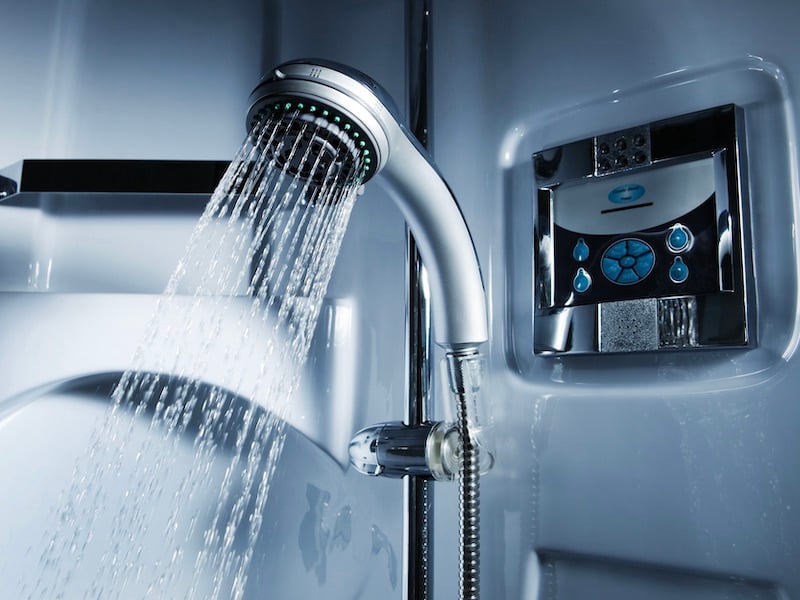
5. Toilet
Choose an extra-tall toilet that is higher than a normal one, or purchase a height extension adaptor, so that it’s easier to sit down and get back up. Toilets are available with automated flushing mechanisms for added convenience and heated seats for added comfort, too.
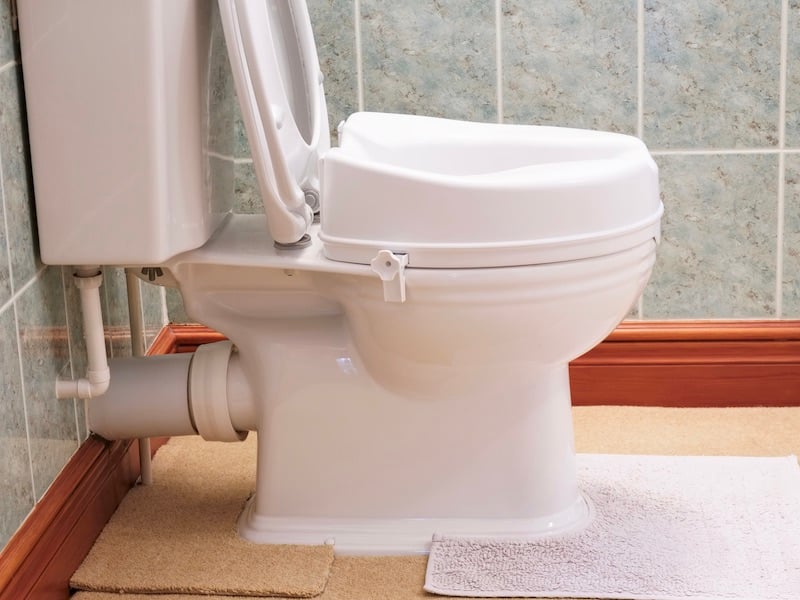
6. Bathroom Vanity and Sink
Deciding upon the height for the vanity and sink can be tricky. A higher vanity is convenient so that you don’t have to bend down to use the sink, but a lower vanity that is open underneath or a wall-mounted sink may be more accessible for someone in a wheelchair. Think about what your needs are now and will be in the future before you make this decision.
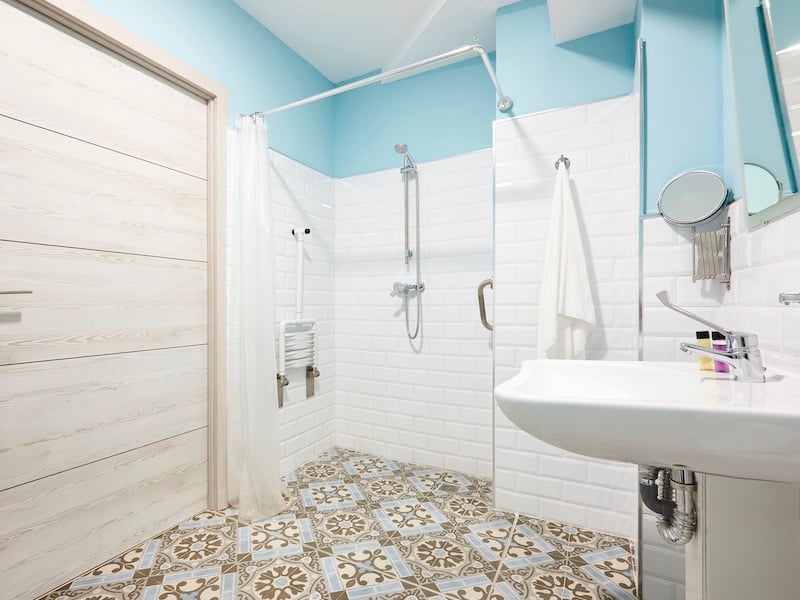
7. Medicine Cabinets
Make sure you have plenty of cabinet space for medications and other toiletries. Glass-fronted cabinets will allow you to see inside with ease. Choose lever style handles instead of knobs.

8. Bathroom Flooring
Falling on a tile floor while trying to get into the bathtub can be physically devastating. Ceramic and porcelain tiles are durable flooring materials, but they can be very slippery. It is a good idea to select tile or another moisture-resistant material that has a rough, not shiny, surface. Selecting small tiles can make the floor less of a falling hazard because there are more grout lines and a slight variation between the tiles. For added safety, have an anti-slip coating applied to the floor tile that you choose and have a wooden slatted floor installed in your shower. If you put down a small rug or bathmat, use double-sided tape to secure it to the floor so it does not slide.
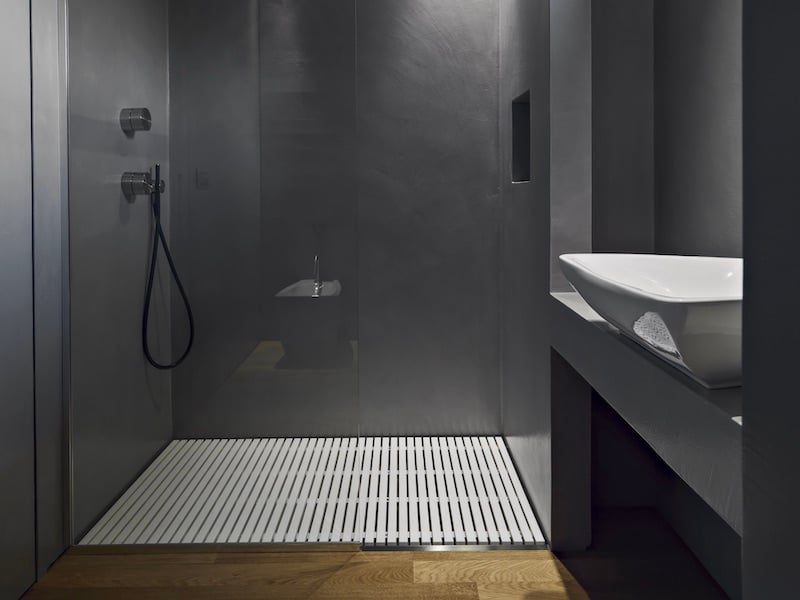
9. Bathroom Lighting
Good lighting makes a bathroom a safer and more comfortable space. Combine overhead, task, and ambient lighting to ensure adequate brightness during the day and at night. Install illuminated light switches or sensor lights that turn on and off automatically when someone enters or leaves the bathroom.
One-Level Living
Having a master bedroom with a full bathroom on the main level eliminates the need to take the stairs for anyone with mobility issues. It also allows for easy access to the rooms that are used every day - the kitchen, family room, laundry room, etc. Even if stairs are not an obstacle for you now, they may be in the future. Consider building an addition or remodeling your existing space to make an area that can be a home office or guest room now, and your master bedroom suite later, when you need it.
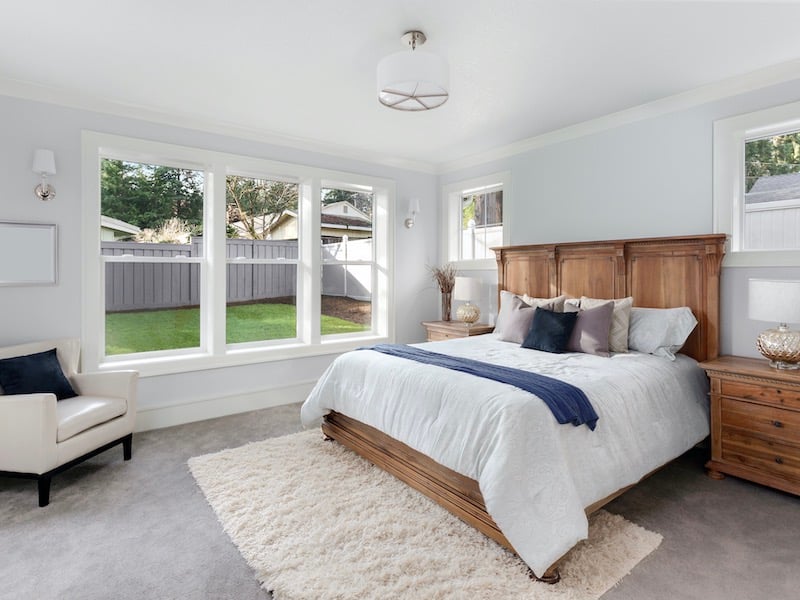
Multi-Level Living
Space constraints may make it impossible for you to live solely on the main level of your home. If that's the case, look into installing an elevator or chair lift that can make it easier to access the different levels of your home. For added safety, make sure that there are sturdy handrails on all stairways and that there is color contrast between the treads and risers, and at the top and bottom of the steps.
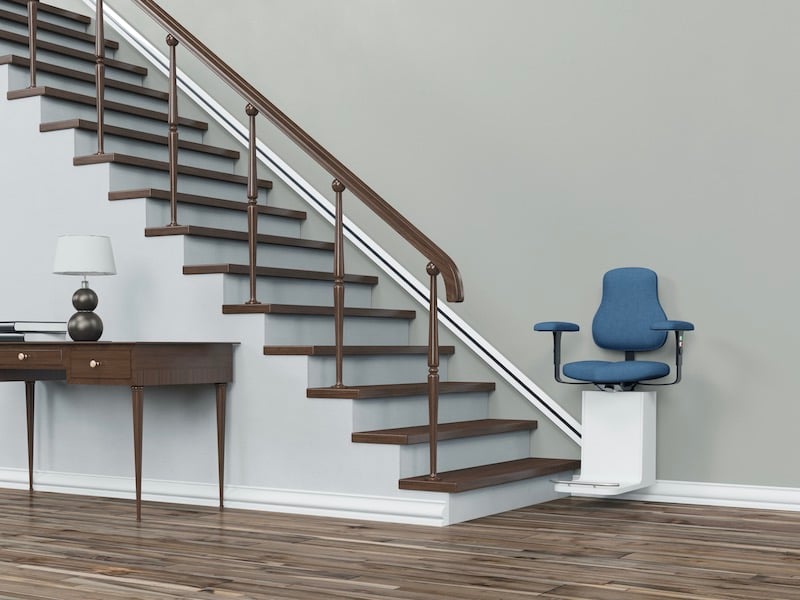
Open Spaces
An open floor plan is ideal for aging in place as it allows you to navigate the common areas of your home without impediment. If you don't currently have an open floor plan, speak to a homebuilder to see what is involved in renovating your home to make it more accessible. Decluttering and clearing out unused furniture and accessories will help to eliminate safety risks throughout your home, too.
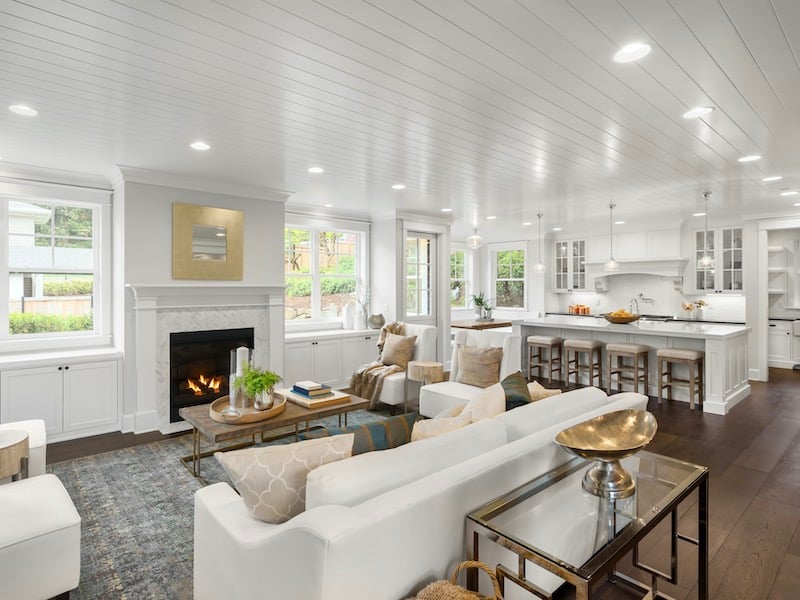
Flooring Materials
High-pile carpeting and area rugs can be tripping hazards, so opt for smooth and consistent flooring materials throughout each level of your home. Flush thresholds also help to prevent falls and eliminate issues with depth perception when you are moving from one room to another.
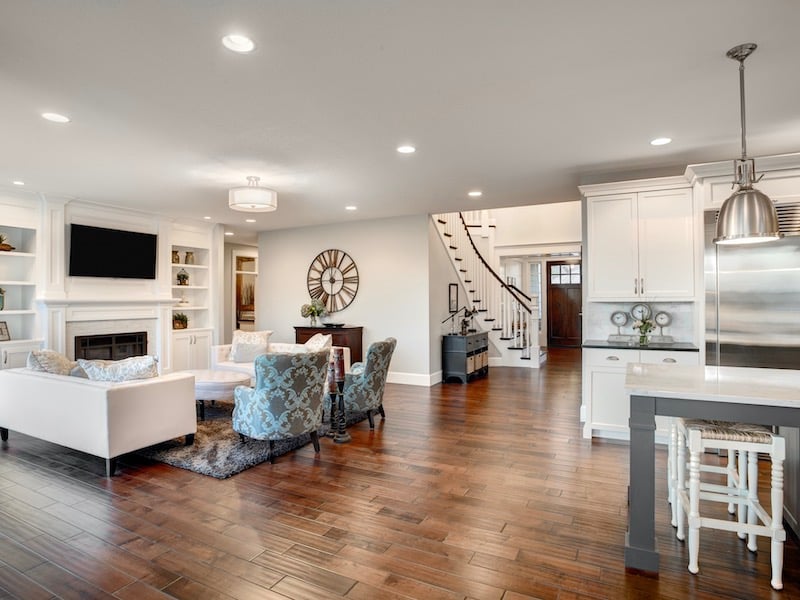
Lighting Throughout Your Home
Ample lighting throughout your home will help to prevent accidents and mitigate eye strain. Overhead, recessed lighting will brighten any room. Task lighting is important for activities like cooking and reading. Accent lighting underneath cabinets or along a staircase can light up shadowed areas.
For ease of use, choose illuminated rocker-style light switches that are placed within reach of someone who is either standing or may be seated in a wheelchair. You can also install sensor switches that turn on the lights when you enter or leave a room for added convenience and energy cost savings.
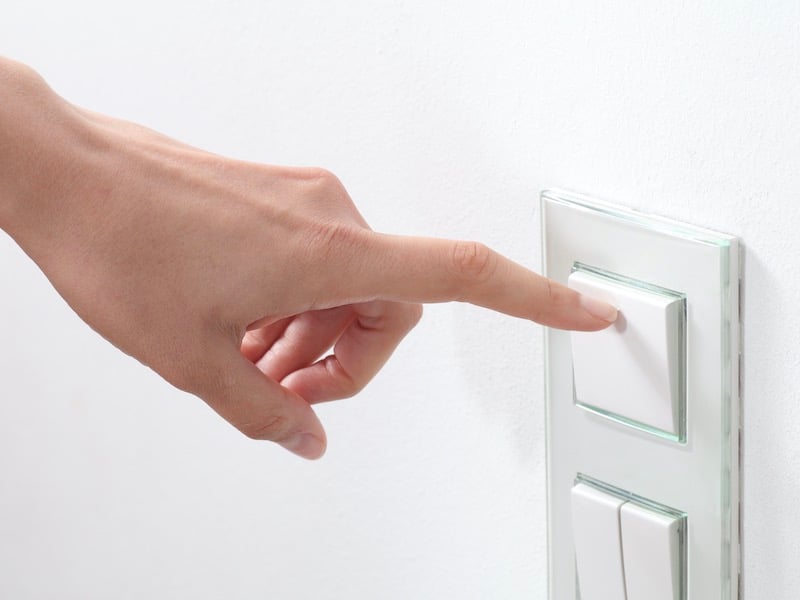
Hallways And Doorways
The Americans With Disabilities Act (ADA) recommends a minimum doorway width of 36 inches and a minimum hallway width of 48 inches to ensure that a wheelchair or mobility scooter can pass through the various areas of a home. Be sure to discuss these measurements with your homebuilder as you are planning for your renovation to ensure accessibility in the future.
Pocket doors can make navigating between rooms effortless since they can be tucked away and are easier to open and close than a swinging door. On all of your doors, replace knobs that may be hard to turn with lever handles that are simpler to manage.
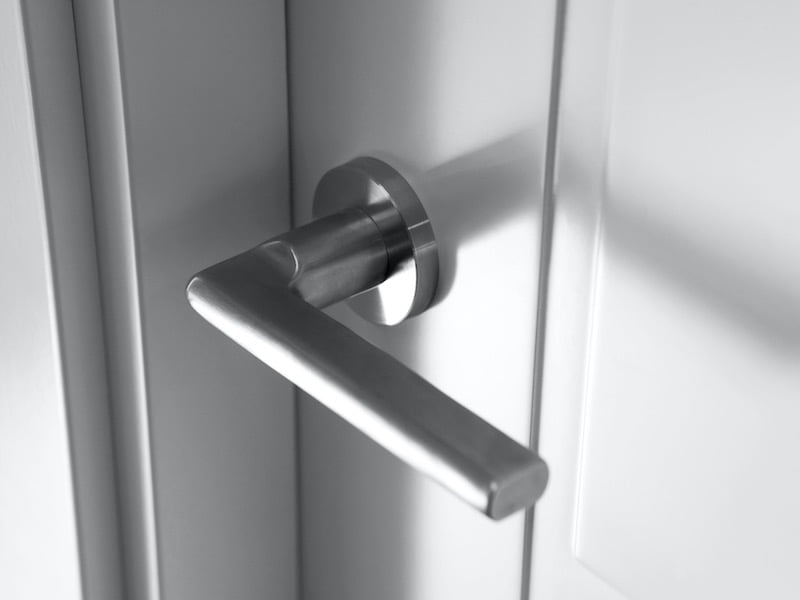
Home Automation
Equipping your home with smart technology devices can help address common challenges of aging, so be sure to include home automation in your remodeling plans. WiFi should reach every room in your home so that your technology is reliable. Consider investing in voice-activated assistant technology that can turn on the lights, open the shades, or adjust the temperature in your home. A smart security system will allow you to lock the doors from your phone or tablet for added peace of mind. There are even smart safety sensors that monitor your activity and can alert a caregiver if you fall, or notify you if you forget to take your daily medications.
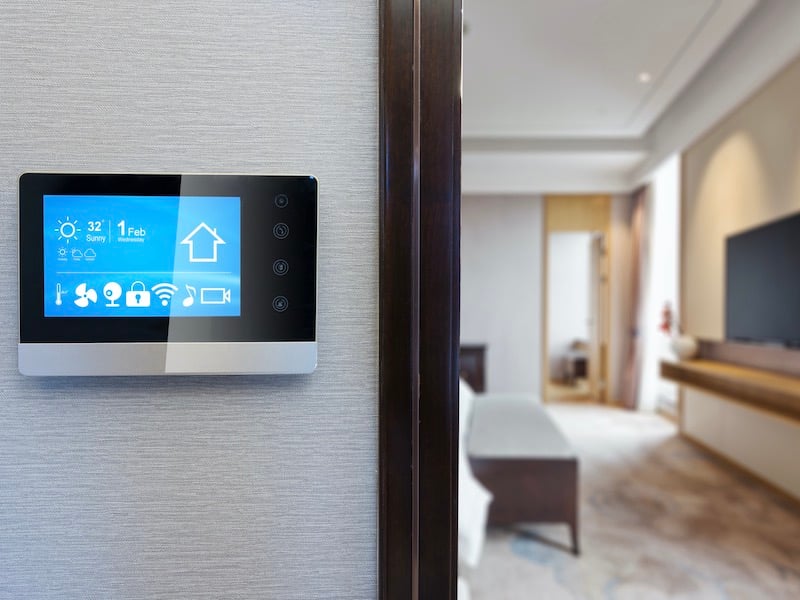
Exterior
A no-step entry into the front and rear of your home is ideal, but if that is not possible, be sure to have handrails on both sides of the steps for added security. All steps should have proper drainage so that water does not accumulate and form slick spots. If necessary, you can install a ramp for better accessibility. In addition, the threshold into your home should be modified so that it is no more than one-half inch in height. Make sure you have a covered area in front of your door to protect you from the elements when you enter or leave your home.
Walkways leading to your home should be wide and smooth with no uneven surfaces that could be a tripping hazard. Cut back bushes and trees so that they don't interfere with the walkways.
Have plenty of lighting around and above each entrance and along the walkways leading to your home. Install motion-sensor security lighting on each corner of your home, too.
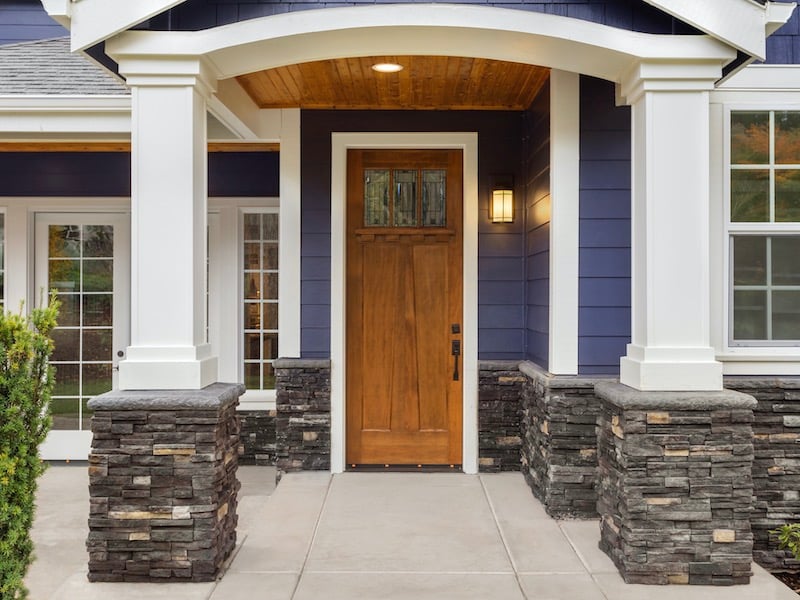
At Meridian Homes, we specialize in luxury renovations and custom home building in the Washington, DC area. Our mission is to create exceptional residences that exceed expectations. Our highly personalized design process and careful management of every project have earned us a reputation over many years for outstanding client service and solid, beautiful craftsmanship. Contact us today to begin your custom home or remodeling project.
Our Home Remodeling Guide takes you through the entire remodeling process so that you know what to expect from the planning phase through completion of construction. Being prepared is the best way to ensure that your renovation will meet your needs and your expectations. Download our Guide to use as a comprehensive resource.

